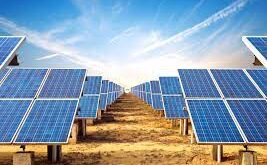Gazprom’s natural gas exports this year have fallen by close to 50 percent to 100.9 billion cubic meters outside the former Soviet Union, Bloomberg reported this week, citing a statement by the giant’s chief executive Alexander Miller. This is the lowest since 2000, the report noted. The drop was the result of a combination of events, including Russia’s reduction of pipeline flows to Europe following the barrage of sanctions the EU directed at Moscow after the latter invaded Ukraine. Another reason for the drop was the EU’s consequent switch to LNG in a bid to reduce its energy dependence on Russia.
In his end-of-the-year address, meanwhile, Miller noted that global gas demand had dropped by 65 billion cubic meters this year, with 55 billion cubic meters coming from Europe. He added that in the future, however, global gas demand is set to grow and Gazprom is preparing for this growth.
China, he said, is set to account for 40 percent of global gas demand growth, which will itself amount to 20 percent from current levels. Positioning itself to benefit from this outlook, Gazprom plans to boost its gas exports to China to 48 billion cubic meters “very soon”, Miller said.
As part of Russia’s energy pivot to Asia, Russia’s president, Vladimir Putin, inaugurated earlier this month the Kovykta gas field in eastern Siberia, a project long in the works, which will supply gas to China. The field has reserves estimated at 1.8 trillion cubic meters and is the largest in eastern Siberia discovered so far.
Asia has become a priority export destination for Russian energy after the breakup with Europe, with China the biggest client Russia has on the continent and India a close second. The energy pivot followed, with a little delay, a political pivot that started ten years ago.
Earlier this week, Russian Natural Resources and Environment Minister Alexander Kozlov said in a TV interview that the government planned to step up oil and gas exploration—especially gas exploration—in eastern Siberia with a view to ramping up exports to Asian partners.
There is also another reason why eastern Siberia oil and gas fields are becoming a priority: currently, most of Russia’s oil and gas are coming from western Siberia, which is not immune from natural depletion. Western Siberian fields are mature ones while deposits in eastern Siberia are yet to be tapped.
As part of this exploration and production move from the west to the east that symbolically reflects the political shift from the West to the East, Rosneft several years ago announced the biggest project in its history—Vostok.
Vostok Oil, in Russia’s Far East, comprises several groups of oil fields holding an estimated 44 billion barrels of oil. Work on the project began in January 2021. The total cost of its development has been estimated at $170 billion over the lifetime of the fields.
Western sanctions have interfered with Rosneft’s plans for the Vostok project, with Rystad Energy forecasting earlier this year that Russian oil and gas investments are set to drop by $15 billion this year and continue falling over the next few years as well. Meanwhile, Trafigura, which had bought a stake in Vostok, sold it after the sanction action began, to a Hong Kong trader, Nord Axis.
Despite this projected slump in investments and the pullout of Western companies from Russia’s oil and gas industry, Gazprom’s CEO sounded an upbeat note about the future. He noted in his speech that Gazprom has been booking a reserve replacement rate of over 1 in the past few years and that some of the deposits Gazprom operates could continue producing well beyond 2100.

 Iran Energy News Oil, Gas, Petrochemical and Energy Field Specialized Channel
Iran Energy News Oil, Gas, Petrochemical and Energy Field Specialized Channel



